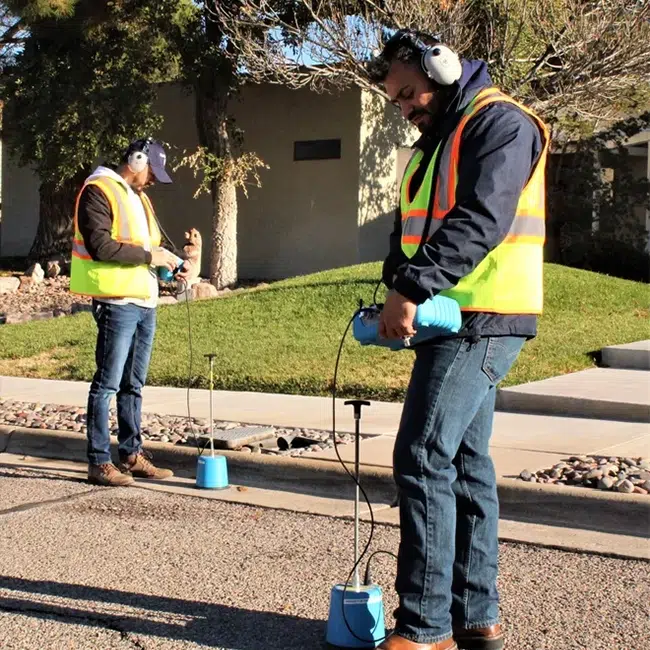Cutting-edge Solutions for Early Discovery of Water Leaks in Structures and Facilities
From innovative leakage detection modern technologies to the deployment of IoT sensors for real-time tracking, the landscape of leakage prevention is developing swiftly. Automated water circulation analysis systems are reshaping how leaks are determined and resolved, leading the means for a proactive approach to water leak detection.
Advanced Leak Detection Technologies
Advanced leak detection technologies, outfitted with advanced sensors and formulas, play an important role in swiftly recognizing and pinpointing water leakages in numerous settings. Electromagnetic sensors can determine changes in electromagnetic areas created by water, providing yet another layer of leak detection ability.

IoT Sensors for Real-Time Monitoring
In the realm of modern-day water leak detection, the assimilation of IoT sensors for real-time monitoring represents a pivotal innovation in boosting aggressive leakage discovery abilities. These sensors provide continual tracking of water supply, giving real-time data on water circulation rates, stress variations, and temperature level changes. By leveraging IoT innovation, these sensing units can spot even the smallest anomalies in water usage patterns, enabling very early recognition of potential leaks before they rise right into significant issues.
IoT sensors transmit information to a centralized platform, where sophisticated formulas analyze the information and create notifies or notifications when irregularities are spotted. This real-time monitoring capacity enables home proprietors or facility supervisors to quickly address leakages, reducing water damage, decreasing fixing prices, and conserving water sources.
Moreover, IoT sensors can be integrated with structure management systems, enabling computerized feedbacks to spotted leakages, such as shutting off water valves or triggering pumps to alleviate the effect of leaks. In general, the execution of IoT sensing units for real-time monitoring significantly enhances the effectiveness and effectiveness of water leakage discovery in buildings and framework.
Artificial Intelligence Algorithms for Leakage Prediction

One key benefit of utilizing maker discovering for leakage prediction is its ability to continuously learn and enhance its accuracy over time. As more information is accumulated and fed right into the formula, it can refine its forecasts and adapt to transforming see it here conditions, ultimately enhancing the integrity of leak detection systems.
Furthermore, artificial intelligence algorithms can help in identifying subtle signs of leaks that might go undetected by traditional monitoring methods. water leak detection. By assessing complex information sets in real-time, these algorithms can offer early cautions and signals, enabling timely intervention and precautionary upkeep to minimize possible water damage and connected costs
Using Thermal Imaging for Leakage Discovery
Thermal imaging innovation uses an appealing technique for finding water leaks in different systems and facilities. By making use of infrared radiation and temperature level variances, thermal imaging electronic cameras can identify surprise leakages that are not quickly noticeable to the nude eye. When water runs away from pipelines or structures, it frequently transforms the i thought about this temperature of the bordering location, producing temperature level differentials that thermal video cameras can record. These temperature level irregularities are then converted into visible pictures, highlighting the precise area of the leakage.
One of the key advantages of thermal imaging for leakage discovery is its non-intrusive nature. Unlike conventional approaches that may call for getting into walls or floorings to find leaks, thermal imaging permits non-destructive testing. This not just conserves time and lowers prices yet likewise lessens interruption to the building or infrastructure being assessed. In addition, thermal imaging can promptly check big areas, providing a comprehensive overview of possible leakage resources in a timely manner. In general, the use of thermal imaging innovation enhances the efficiency and accuracy of water leak detection, making it a beneficial device for preserving the stability of buildings and infrastructures.
Automated Water Circulation Evaluation Solutions
Exactly how can automated water circulation analysis systems change the discovery and monitoring of leakages in different systems and frameworks? Automated water circulation analysis systems offer a proactive technique to leak discovery by constantly checking water flow prices and patterns. By establishing standard data, these systems can promptly identify inconsistencies that find this may indicate a leak, enabling punctual treatment to stop substantial damage.
These systems use advanced formulas to analyze real-time information and provide prompt notifies when abnormalities are discovered, permitting quick activity to be taken. In addition, automatic water circulation evaluation systems can be integrated with structure administration systems or IoT systems, enhancing general effectiveness and making it possible for remote monitoring capacities.
Additionally, the information gathered by these systems can be made use of for predictive maintenance purposes, assisting to determine prospective powerlessness in the facilities before leaks occur. Overall, the implementation of automated water circulation evaluation systems can dramatically enhance leak detection and management techniques, inevitably causing cost savings, reduced water wastage, and raised sustainability in structures and facilities.

Conclusion
To conclude, the combination of sophisticated leakage discovery modern technologies, IoT sensing units, machine learning algorithms, thermal imaging, and automated water flow analysis systems uses cutting-edge solutions for early detection of water leakages in structures and framework. These modern technologies enable real-time tracking, prediction of leakages, and efficient discovery approaches to stop water damage and waste. Applying these solutions can help in maintaining the stability and sustainability of water systems in various settings.